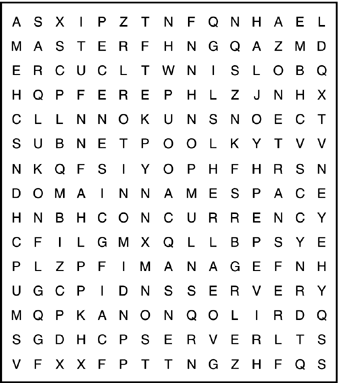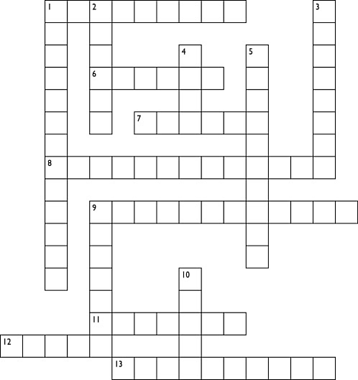| "Perception is reality." In NetWare 6, you can transform the simultaneous perception of multithreading concurrency into a reality by adding two or more processors to the server. This means that NetWare 6 can extend beyond the illusion of simultaneous processing by executing multiple threads at the same time. All of this magic is made possible using a sophisticated NetWare service called Scheduler. The Scheduler is the brains behind NetWare 6 multiprocessing. It determines how to distribute software threads based on a number of different criteria: Single-Processor Thread If the programmer thread is not multiprocessor safe, Scheduler funnels the program and its threads to a single processor. New Multiprocessor Thread If the program is multiprocessor safe but it has never been run on this server before, the Scheduler funnels it to all available processors simultaneously. Returning Multiprocessor Thread If the program of thread is multiprocessor safe and it has run on this server before, the Scheduler funnels the program and its threads to the processors where they last ran. This allows the processors to use their cache to execute threads faster and avoid bottlenecks.
Because NetWare 6 distributes multiprocessing threads according to a cache model, it can create a situation in which some processors are overused and others are underused. To solve this problem, the NetWare Scheduler periodically calculates use of each processor and determines whether it is overused or underused. In the case of an overused processor, the Scheduler moves threads to an underused one to balance processor workloads. However, moving data from one processor cache to another causes another problem cache contention. Cache contention slows the processor because it is forced to send data back and forth as it tries to accomplish load balancing. To solve this problem, NetWare 6 forces each thread to run on the same processor each time it is run. And to make matters even better, NetWare 6 creates a run queue (a list of threads to be run) for each installed processor. This enables each processor to track the threads it will run without competing with all others processors for access to one global list. REAL WORLD Although cache contention is generally a bad thing, there are times when it is preferred: If a thread is not multiprocessor-enabled, the Scheduler must move it from one processor to another and suffer the corresponding cache contention. In some cases, cache contention can facilitate load balancing because the gain in allocation of an underused processor is much more powerful than the loss incurred by cache-contention shuffling.
|
To take advantage of NetWare 6 multiprocessing, the processors in your NetWare 6 server must meet the following minimum requirements: All processors must be functionally identical. This means they should be of the same family and model. Server processors can, however, use different steppings (similar to revision numbers). For example, you can't mix a Pentium IV with a Pentium V but you can mix a Pentium V stepping 3 with a Pentium V stepping 4. All processors must operate at the same speed. All processors must be capable of communicating with each other. All processors must share the same I/O subsystem. All processors must share the same memory space.
Congratulations, you have just helped build the world's central information superhighway with the aid of web-based administration tools, highly scalable networking protocols, and high-performance multiprocessing. More importantly, you have just survived any time, anywhere advanced administration via NetWare 6. In this chapter, we learned how to supercharge the network with the help of numerous advanced administration components, including: iMonitor, iManager, DNS/DHCP Services, SLPv2, and true server-based multiprocessing. We hope that you now feel prepared for the emergence of "oneNet." That's your life as a NetWare 6 CNE. Now that you have completed the foundation of Novell's information superhighway, it's time to begin populating it with twenty-first century resources. As network users and applications have become more sophisticated, so has their insatiable appetite for functionality including advanced file management, web-based printing, and cross-platform support. In the next few chapters, we will learn how to manage some of NetWare 6's greatest assets, including Novell Storage Services (NSS), iPrint, iFolder, and Clustering Services. We'll begin this odyssey with NSS. Lab Exercise 4.4: Becoming a NetWare 6 Pro (Word Search Puzzle) | Q1: | Circle the 20 NetWare 6 advanced administration terms hidden in this word search puzzle by using the hints provided. 
Hints The perception that a single processor is executing two or more software threads simultaneously. Provides a framework for dynamically passing configuration information to TCP/IP clients. An eDirectory object that serves as a central repository for IP address information. Used to extend the eDirectory Schema to run DNS/DHCP Services. Offers a distributed name/address database to translate numerical IP addresses into alphanumeric names. An eDirectory object that contains specific configuration parameters, including a zone list, DNS Server IP address, server options, and a forwarding/no-forwarding list. Another name for the DNS Hierarchy. Enables you to configure eDirectory administration roles from a web browser. Enables you to monitor and diagnose all the servers in your eDirectory tree from a web browser. Primary DNS server that contains the Authoritative Database. An eDirectory object that identifies a range of IP addresses available for dynamic address assignment Must be extended to integrate DNS/DHCP Services into eDirectory. Provides automatic resource discovery and registration on a TCP/IP network. An eDirectory object that provides support for multiple subnets through a DHCP or BOOTP forwarder by identifying a pool of subnet addresses for remote LAN address assignments. Process of downloading the Authoritative Database to a Replica server.
|
See Appendix C for answers. Lab Exercise 4.5: NetWare 6 Advanced Administration (Crossword Puzzle) | Q1: | 
Across 1. DNS clients 6. Delimiter used in domain names 7. Each node in the DNS tree 8. Database on Master server 9. Also known as "Domain Name Space" 11. iMonitor NLM 12. RR which maps alias names to DNS names 13. DNS zones
Down 1. Previously known as NetWare Management Portal 2. Groups of SLP services 3. Fully qualified DNS domain name 4. Also known as "Novell Remote Manager" 5. Typically set to 255.255.255.0 9. A logical division of the DNS hierarchy 10. NLM for loading the DNS server
|
See Appendix C for answers. |

